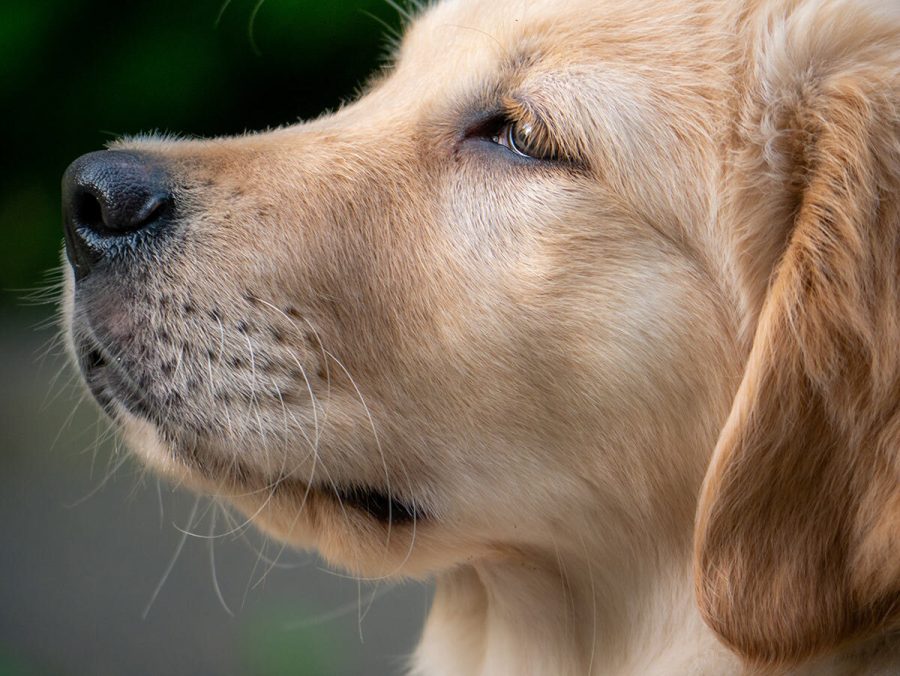On our four-legged friends’ muzzle you surely have noticed some funny whiskers. Nothing is useless, so what’s the purpose of whiskers in dogs? Let’s find out.
Why dogs have whiskers
Whiskers are fairly harder than the rest of the fur, they are on the nose, just above the upper lip, but also on the chin and the forehead. Whiskers is how we call moustaches in animals, they are really important and should never been cut. Whiskers start to grow in the puppy well before the fur and they are rougher and thicker; follicles show nerve fibers that send sensorial information to the dog’s brain. So, whiskers are the most important receptors and they can perceive even the small changes in the air flux. Whiskers are can close the eyes immediately in order to protect them, while whiskers near the mouth compensate the presbyopia in dogs, since they see better from far distances than from close distances. Whiskers helps the dog to navigate and their function is related to sight.

What function do whiskers have in dogs
As mentioned before, whiskers help the dog navigate and compensate their lack in sight. Whiskers help the dog moving in the dark, making it recognize distances. Air currents send information to the dog about the space surrounding it and about some objects near it. Whiskers situated near the eyes defend the dog from dirt and objects that may cause damage to them. Whiskers near the mouth help the dog recognize those objects that are situated below the chin and are note visible. In addition to distance, whiskers provide information about the size of the objects. Our furry friends have an extraordinary smelling skill, but they lack in sight, instead. In order to compensate this inconvenience, they have whiskers that work as radars and can perceive all vibrations. That’s why it is very important never to not cut them.
